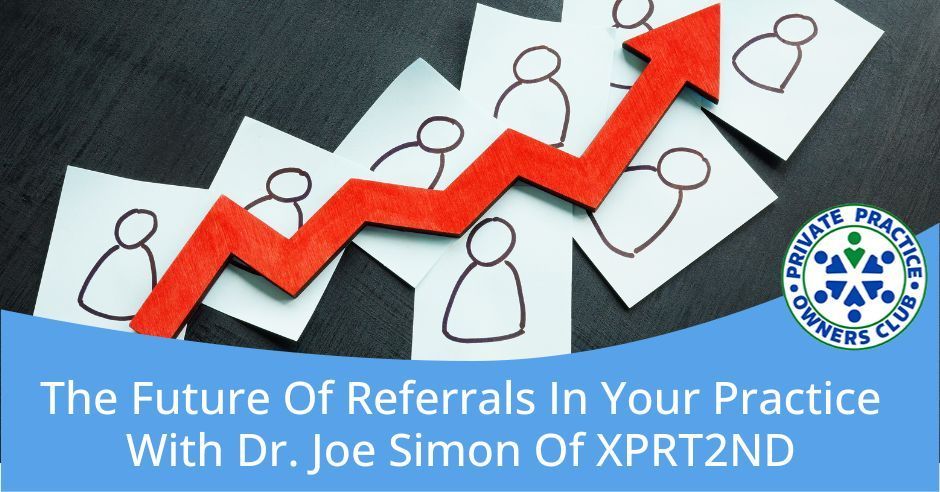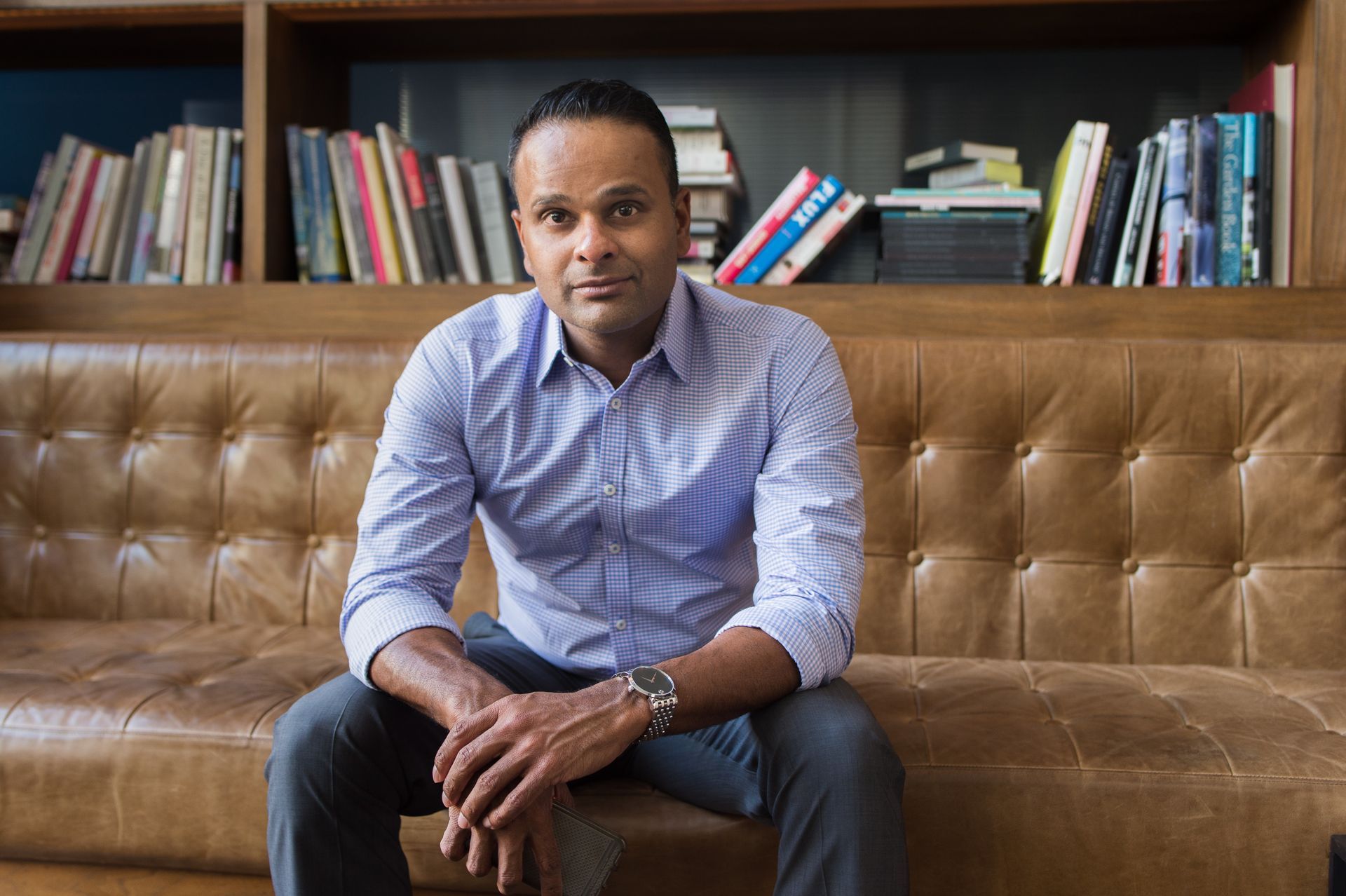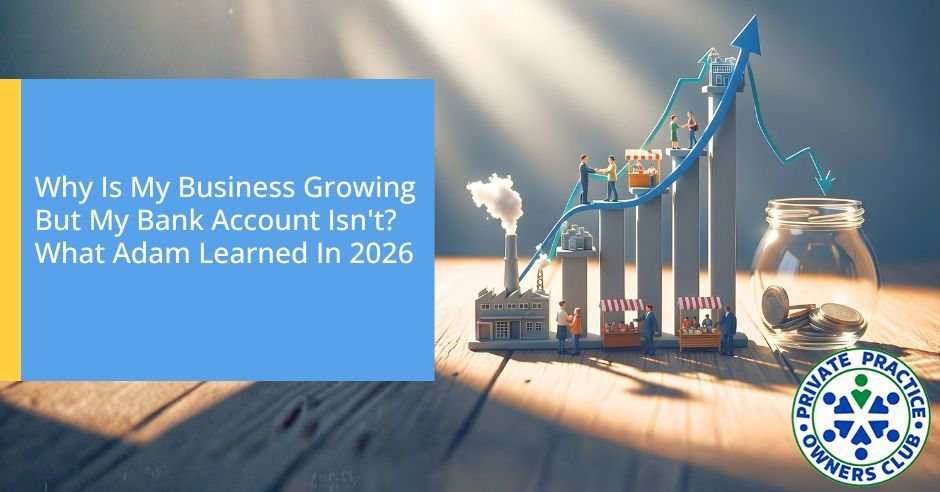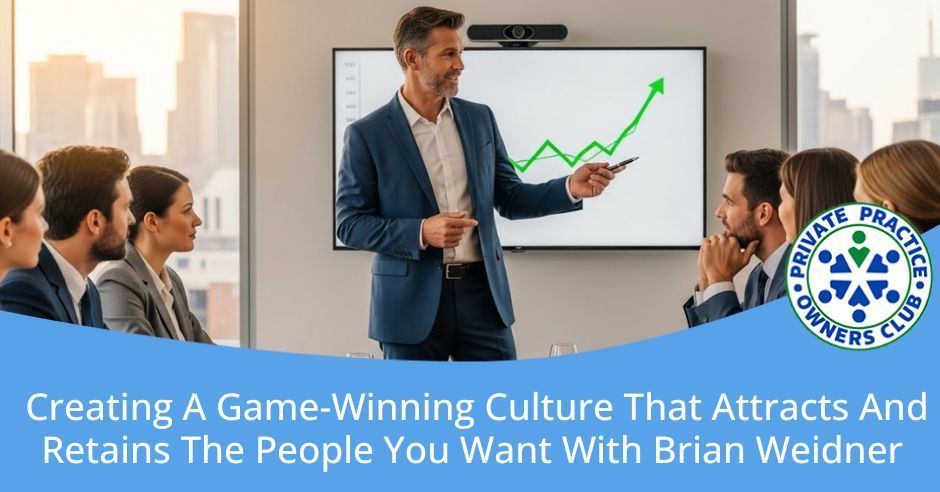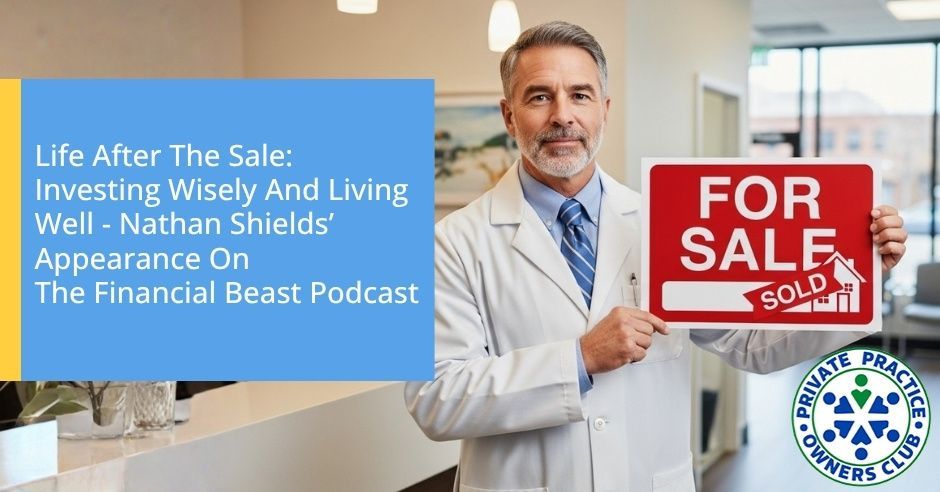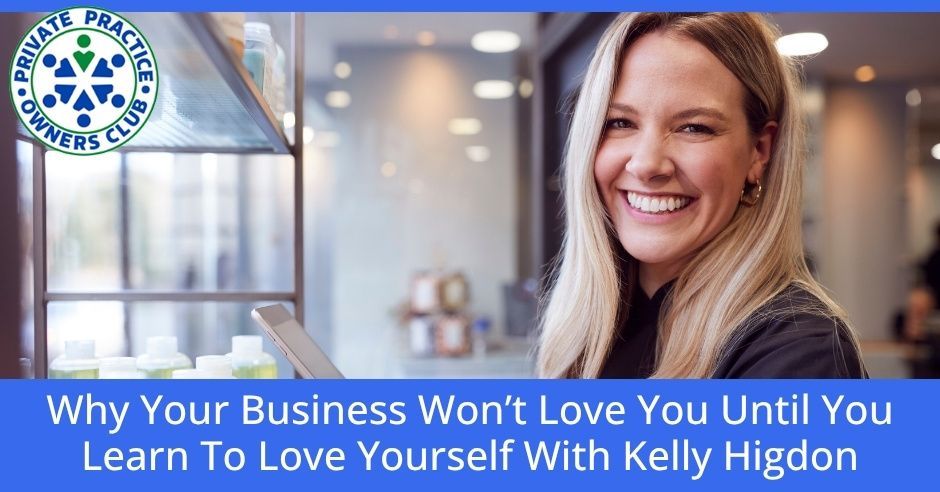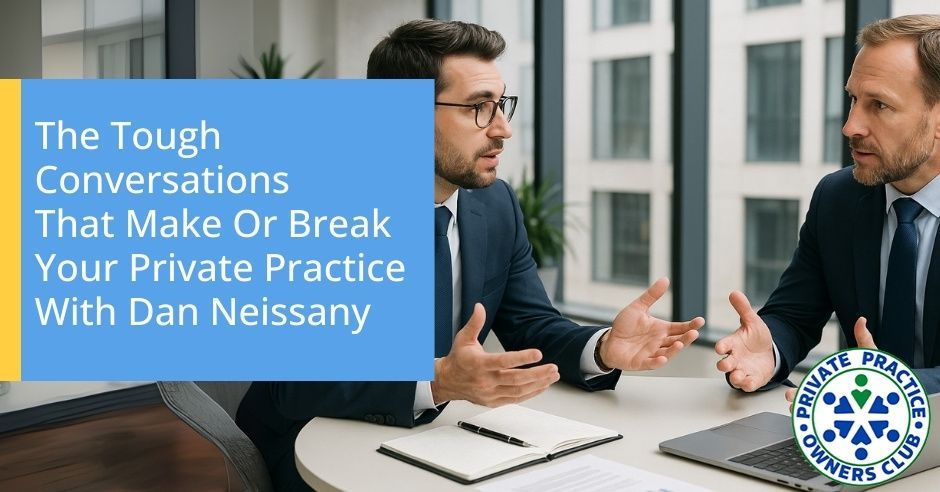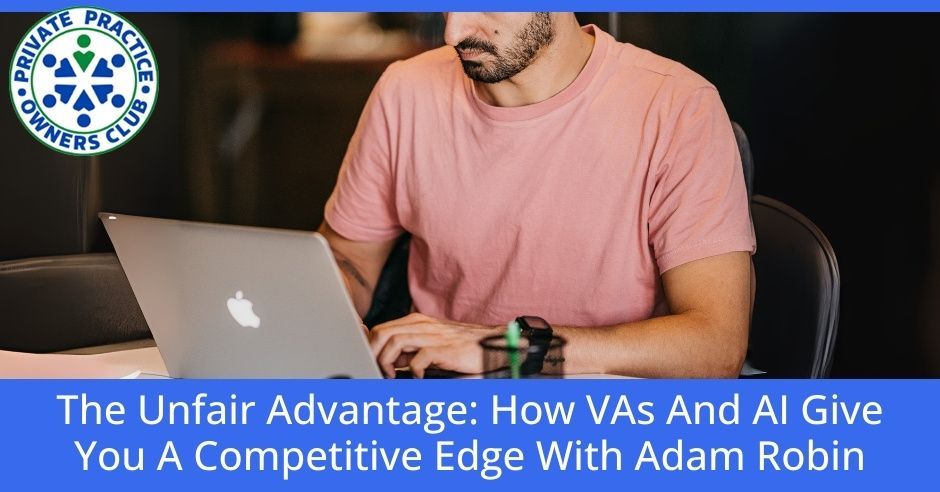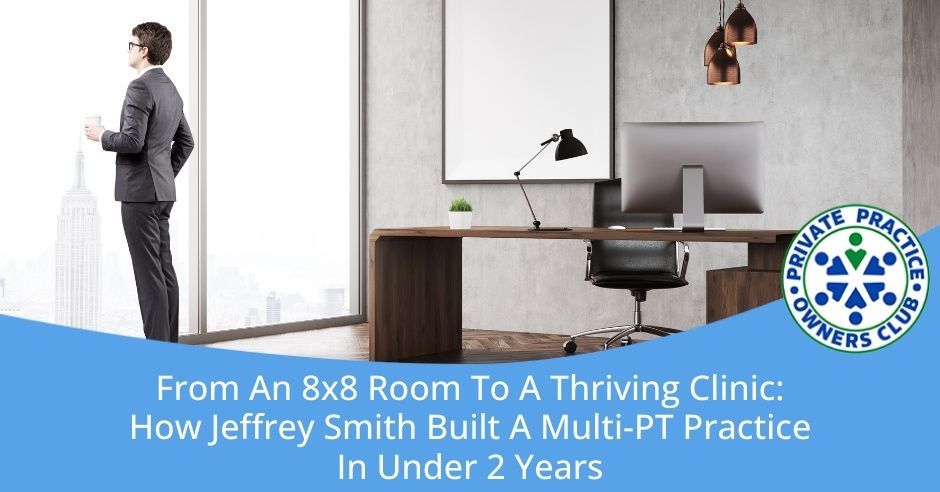Dive into a powerful conversation on
ilovept.org’s XPRT2ND initiative, a PT-led movement transforming the way medical referrals are being made. Through a patient-first, surgery-last approach, orthopedic care has been greatly improved and made more accessible.
What you’ll discover in this episode between Adam Robin and
Joe Simon:
· A mission born from necessity. Learn how XPRT2ND empowers clinicians and patients with expert second opinions within 48 hours, ensuring truly medically necessary interventions
· A win-win for PTs and patients. Physical therapists can help guide better orthopedic decisions, earn referral rewards, and solidify their role as essential healthcare advocates
· How to partner and grow. Hear about the affiliate model: early-access recruitment, access to marketing materials, pitch decks, and training designed to boost both patient care and revenue
Join us as we explore how PTs can lead change, support better clinical outcomes, and grow their practice, all through a patient-first lens.
---
Listen to the Podcast here
The Future Of Referrals In Your Practice With Dr. Joe Simon Of XPRT2ND
Ladies and gentlemen, welcome to the show. I ran across this guy named
Dr. Joe Simon
in New York. It was a workshop that Nathan and I were hosting. He came in and gave a short presentation about a new project that he was putting together, and it caught my eye. I think it's something that's worth hearing about, so I wanted to bring him on to the show and learn about where this is going. Here's the short version.
Dr. Joe Simon is a physical therapist from New York. He’s been a practice owner for twenty years. At the peak of it all, he owned eleven clinics doing over $10 million a year. He was a very successful practice owner. He knows what he's doing. He's into consulting, not just as a physical therapist but across a few different professions as well. He is the founder of
XPRT2ND, which is a platform where you, as the provider, the physical therapist, can refer your patients out to get second opinions when they matter. The cool part is that you can even get compensated for that referral.
---
Dr. Joe Simon, welcome to the show. How are you?
Thank you for having me. It was an absolute pleasure to see you and Nathan do what you guys do at the event. I was blown away by the consulting. It's amazing. For anyone tuning in to this show and you've not attended one of their events, the amount of knowledge both of them bring, and even the practitioners that were there, was a great crowd. Great vibe. I loved it. I appreciate being there. It was a lot of fun. Thank you.
Introducing Dr. Joe Simon
I've been in PT for twenty years. I'm a PT myself. Sometimes I look back and say, “I'm getting old.” The fun part about it is I'm always looking for some new stuff, looking to innovate. The profession has its ups and downs. We can either complain or we can figure out different ways to help patients. We can help each other and help our referral sources. Honestly, this is something that has ignited my passion again.
After you've been doing it for so many years, you get a little stuck in a rut. The
XPRT2ND is the first orthopedic second-opinion platform. It’s something that has ignited my passion to get back into it. Bringing PTs along is not only something that I want to help my fellow PTs, but it's something that I know they have a super skillset for, as well as what I call my secret sauce.
I presented this to private equity, I've presented to venture capital, and I presented it to dozens and dozens of orthopedic surgeons across the country. I can tell you, everyone said the same thing to me. They said, “What's the secret sauce?” I always come back to the same thing. I'm like, “My physical therapist is the secret sauce.”
Once they hear the whole thing, which I'll go through with you guys, so you can hear exactly what the platform is all about, they're all blown away by it. It makes sense. To them, it's like a little switch that goes off in the head. Everyone has a second opinion story. Every orthopedic surgeon that I've spoken to in the last six months starts chuckling after a while because they go, “My sister's brother's cousin's roommate gives me a call, sends me some stuff, texts me pictures of a fractured ankle.” They're like, “What do you think about this?”
They're already doing it. For them, they're like, “This is something we do.” I think all of us in healthcare want to help people. That's why we got into this. I can tell you from my experience in the clinics, I cannot tell you how many patients would come in and they would say, “Joe, listen, Doc told me that I need to get a rotator cuff repair. What do you think?” I'll say, “We're doing good, but it's not getting better.” He's like, “I don't like that guy. Does anybody else?” These are comical things, but it's happened so many times. I'm like, “Yeah, I do know somebody else.” Sometimes it can get political. You don't want to send the patient that got referred to somewhere else, or if they come in directly to you, and then they're looking, where do you send them?
That's how I built my practices, where I would do direct marketing, bring those patients in, then I would pick and choose where I would send those patients out. That's how I built my relationships with the physicians. These are things that I've done over the years that have worked amazingly well. That's how I think this platform is going to be a game changer, not just for PT and ortho, but I think it's going to be a game changer for healthcare in general.
For those that are reading, we don't know each other that well, but you can tell when people are talking about something they're passionate about. The vibe I get from you is as I hear you talk about it, I could feel it lights you up. It sounds like it's something you're excited about. You're very good at what you do because you don't build a cool practice like 11 clinics doing over $10 million.
The Origin Story Of XPRT2ND
You've got to have a lot of hard work, some sacrifice, a little bit of luck, but also some skill and savviness. I love it when people like you in the industry, the innovators, are doing new things. That gets me excited. Let's dive into XPRT2ND. The question that I have in my head is, what problem does this solve for the period? I guess it's probably going to solve a few different problems, but in your mind, what problem do you see this solving?
Let's get into it. I'll give you the backstory of why I came up with this in the first place. Last summer, at my daughter's birthday party, we hung out. It was a massive barbecue, a lot of people over, and I got a phone call. I have an older brother, and he gives me a call and he goes, “I'm in the ER.” He's about two hours from where I live. I was like, “What do you mean? What happened?” He goes, “I'm getting an emergency surgery.”
I'm like, “Wait a minute. Let me get there. Let me see what's going on. Don't do anything yet. What is it?” He's like, “The doctor says I need surgery immediately.” He's not medical. I knew right away, “You need somebody there to go through the process with you. Hang on a minute. I'm going to get there. It's going to take me two hours.” Number one, I had to sober up. I was hanging out at a party.
I tell my wife, “I've got to drive two hours.” The thunderstorm was crazy. By the time I get there, he's obviously in pain, and he's like, “I need this emergency surgery.” To my benefit, I've been in the industry for so many years. I work with a lot of doctors. My cell phone is like a Rolodex. I could scroll through this thing, and I could get doctors from all different types of professions. I partner with physicians.
I've been doing that for the last five years. I have practices that are partnerships. He didn't have an orthopedic injury. He had something else, but the long story short was I reached out to a buddy of mine. He immediately called me back and he said, “I looked at the imaging. Tell him not to get the procedure. This is an in-office scope. This does not need for him to be cut open.” I was like, “Okay.”
The ER doc comes in and I said, “We're not doing this.” He's like, “Who are you?” I'm like, “I got advice from this doctor.” The guy looked at me and he said, “How do you know him?” I'm like, “Just a friend.” He goes, “He's the guy who trained me.” It was pretty complicated. He was like, “How is this?” I said, “He's going to be here tomorrow morning and he's coming in to help out.” He's a family friend.
The doc was like, “As long as you sign off and say you're willing to wait and this doc is coming in.” I also have the doc call the attending at the hospital as well. They all agreed. He came in and did the process. The next day, when my brother was recovering and thank God he's perfectly fine. It was a little scope done in and out, and he felt great. I'm like, “Why would you ever agree to get this massive procedure done? What is wrong with you?”
Getting Rid Of Insurance Through XPRT2ND
He looks at me and he goes, “Dude, I don't have your phone. I don't have your cell phone, so I could scroll through all the people at will. I don't have that.” It sparked something in my head. I'm like, “Why don't we?” I'm sitting there thinking, “That's such a great concept. Why can't we get access to people when we need it?” Let's be honest about it. I'm not a conspiracy theorist, but health insurance companies are your first roadblock.
They’re very secretive. They like to keep everything exclusive. They want to keep you in the dark about a lot of things.
Everything has a timeline. They're going to say, “Before you can get the MRI, you need six weeks of PT. You need to be authorized before this x-ray. You need to get your primary to sign off on it.” You're looking at this, but think about that. You go see your primary, and it is automatically a 4 to 6-week wait? You see the primary, and he goes, “I'm going to do an X-ray,” which we know the X-ray is not going to show anything because it’s tissue damage, probably not bone.
They're going to say, “You've got to go see the referral to the ortho.” Another six weeks to get in to see the ortho. Your initial knee pain, back pain, shoulder pain, or whatever you were going in for, you're now two months from your initial injury. Two months, and you still haven't gotten into PT yet. Now the ortho sees you and the ortho goes, “I'm going to schedule an MRI for you, but listen, they're not going to authorize it. We've got to send you to PT for six weeks.”
Granted, I love my profession. Most of the time, we can get them better, but there are some times that we cannot get them better because we are not MRIs. We're not X-rays. We cannot see through the human body. We have to say, “We need you to go get that imaging done so we can figure out whether we're missing something, or we need you to see another provider, maybe another specialist, maybe a neurologist, maybe rheumatology. You might have to see somebody else.”
That whole process, we're at twelve weeks in or three months from the initial injury before that MRI is even completed. It's a broken system. That's all it comes down to. It's a completely broken system. Think about it, when they do finally get that and they cannot get better and they're in PT and they're saying to themselves, “My knee is not getting better, my shoulder is not getting better, and my back is not getting better. What do I do?”
It could be the PT's fault. It could be the patient's fault for not being compliant. It could be they're just in a bad condition. They're not healthy. Maybe it's not going to recover. Whatever it is. Now that the patient is told, “I need surgery.” Think about it. We know patients. There's not one patient I know who is like, “Let's go get surgery right away.” What are they? They come to you. They say, “Docs tell me to get surgery.” It's almost like you go to a funeral. You're like, “Sorry to hear that. That's sucks.”
“Good luck.”
You sit there like, “God, that's horrible.” The reality is in the back of my head, I'm like, “You need it. We know the procedure is going to help you get better.” Now here's the risk. Unless you know that doctor's surgeries, his style of care, and what he does after the procedure, and how he does even the stitches, if you don't know any of that, you don't know if he's a good doctor or not. In every profession, PTs and orthos, as well, the bottom 20% are bad.
It is what it is. The bottom 20% of every profession, the bottom 20% of plumbers, are bad. If we look at it and say, “How do we get the patient to have more confidence?” If they do want to get that surgery, they need another set of eyes on it. They need another opinion, but if we went through the traditional process of trying to get an opinion in there, what would happen? They're going to be waiting another six weeks to get in an office visit to see that orthopedic.
The bottom 20% of any profession are the worst in their field.
That orthopedic is going to be like, “Doctor number one was right. You need surgery,” or “Doctor number one wasn't right. You might just need PRP. You might need a stem cell. You might need some more PT. Let's try this new procedure. Let's try this new medication.” There are other things that the doctor could bring to the table. Now, that's tradition, but how do we move that faster? That's where XPRT2ND came along.
We said, “With technology today, we know we can do it between AI, between the people comfortable doing virtual, between patients comfortable using their phone for absolutely everything.” Basically, this little phone could do almost everything at this point. Why can't we make this process easier?
That's what I've been working on for the last six months with a great team behind me, great bunch of advisors behind me, where we're building this platform where the patient could upload their MRI, their x-rays, the imaging, put a little bit of a subjective information onto the platform, upload it. Within 24 to 48 hours, they will be pinging the top-tier orthopedic surgeons in their local area, which we're going to have a geotag of the Midwest or the Northeast of that area, or they will also be referring to a specialist of whatever injury that they're sending in.
If it's like they want to see a shoulder guy, the top shoulder guy in the country, or they want to see the top knee guy in the country, that person will be pinged as well. He will be giving his opinion on their case. What happens with that patient? What are we solving? The initial question is, what are we solving? We're solving a couple of things because, think about that patient is now going to have confidence. He's going to get that opinion back, and he's going to say, “You know what? Dr. Andrew said, I need this shoulder surgery.”
I have a choice. I can either fly to Atlanta and go get shoulder surgery done or I could stay locally in New York and get the surgery, or could stay locally in Maryland and get it, or I can stay locally in Ohio and get this procedure done because I like my doctor, but I wanted somebody else to tell me.” Here's the flip side. They now hear from a specialist. The specialist says, “I have a new technique, a way of doing this. We use a very tiny camera. It goes in. It's almost non-invasive. It is a game changer. Your recovery time is even faster.”
If we look at it, what happens? They are now recovering even faster than they did before. The patient now can say, “I want to go to this guy. I'm going to fly and go see this doctor, get the procedure done, and fly back.” Now living on the Coast, I've seen patients from California and New York fly back and forth. I've seen that all the time, but recently I have seen patients from Ohio travel to New Jersey because the doctors in Ohio couldn't do a set procedure without doing more damage.
I've been seeing it with my partner in practice. I've been seeing it in different physical therapy clinics that I partner with and consult. We're seeing things. The game is changing because the average person has a little bit more money, and they want a specialist. They want to recover the best. They want that to happen.
The concept of XPRT2ND is that once it's uploaded, once the doctors give their feedback, the patient now has the ability and the patient has more confidence. They have some more clarity. They have the opportunity now to say, “I can go back to my current doctor and ask better questions.” I can go back to Dr. Johnson and say, “Dr. Johnson, I had a second opinion with Dr. Andrews. This is the information he gave me. What do you think about this?”
Now Dr. Johnson is going to say, “That's great. Something I could get behind, or I think you have to dive in and talk to Dr. Andrews a little bit more about it.” This way, the patient now has a chance to get more than one opinion. You're getting multiple opinions. If they deem so, if they want to pay for multiple opinions, they can do that.
Here's the flip side of all of it. If we look at when that patient is looking for that second opinion, they're sitting in physical therapy. I've been doing this long enough to know that most of those patients, 99.9% of those patients, when they're thinking about surgery or when physical therapy fails or they come to the physical therapist, because the physical therapist, we've built rapport with them for many years.
Patients come back to you after 5 years, 10 years, they come back and they're like, “You did my shoulder, you did my knee, took care of my mom, you took care of my family. I'm getting this done.” They're not even coming to you for PT, but they come to you for your opinion and say, “What do you think about this? What do you think I should do about this?” That's the most amazing part, because you can now give them the ability to say, “Scan this QR code, check out this platform. Place your information on this platform and see the top-tier doctors across the country who will give you advice on your diagnosis.”
From that point, you can make a better decision on your healthcare. We're removing health insurance out of the way. There's purely cash pay. It's a cash option for a quick response. It’s like, “I want this response. I'm not going to wait six weeks. I'm not waiting for somebody to give me authorization. I'm not going to wait for another stamp of approval.”
The reality is you're going to get a receipt. Can you submit it to your HSA or FSA? Sure. These are all things that can be done with it, but the platform is designed for speed, for the patient to say, “I have a question, I need a solution, what should I do?” That's what we're doing. How do the PTs come into this? The PTs who refer their patients to the platform are incentivized as well. They get a $50, basically in marketing terms, they get an affiliate commission.
They're getting a commission for patients that they refer to the platform. The patient has to pay for that service, but this way, if a PT generates two referrals a month, it's an extra $100. What does a $100 do for you? Gas, food, whatever it is. We know PT salaries are all over the place these days, but at the end of the day, if I could do something to uplift my profession, give them different ways to make some money.
The younger generation figures out some side cash from doing something they're already doing. This is not new, like, “You have to install this. You have to do that. You have to do all these things.” This is very simple. You don't have to take any CEUs or anything. This is saying you do this anyway. You're in your clinic, giving out second opinions or referring people to other orthopedics anyway. It's one of those things.
That's XPRT2ND in a nutshell. That's what we're deciding, and that's where we want PTs to come on board. That's what I said. You mentioned the passion behind it. This is the passion behind it because we've put in a lot of time, effort, and money behind this, and we've been scaling it. We're getting ready for the beta phase. That's why we're looking for as many PTs as possible to come on board.
That's super cool. I wrote down a few notes. The first thing I wrote down was that I love how it empowers the patient so much. They have access, which is key. They have access to the information they need quickly, and that will give them much more control and perspective over their situation. Patients come to PT because when you break it down, especially those surgical candidates. They feel lost.
How XPRT2ND Empowers PTs
Their identity is being stripped away from them. They're not able to do the thing. They don't have control of their life in that domain. It's scary. I could see how something like this would empower patients and help them feel like they do have control over their situation. The other thing that came to mind is that it empowers the PT as well, the PT being the catalyst for that, like being the introduction agent to that. I think that's cool.
I've interviewed a couple of PTs, like how you guys allowed me to come in and do a quick survey of your room and ask PTs what would be the incentive for them. I cannot tell you how many hundreds of PTs I've spoken to at this point, when we were first building out this MVP. I can tell you one thing. Every PT came up with a couple of different things. We would try to solve every objection.
One of them was like, “Joe, there's only one orthopedic group where I live. I would love for my patients to have a second opinion from somewhere else, but it's politics. I don't want to lose this referral source from the only ortho group in my town. I don't want that.” I said, if you're referring them to a platform and there's no competition, these doctors are not local, they're all over the place, this is good. I also asked him and said, “Connect me with the orthopedic surgeon because I want them to join the platform.”
Correct, which is great because the ortho doesn't want to lose your business either. They had their incentivized to get on that platform as well.
The funny part about this is when I got to speak to the orthos in that same town, the ortho said something very goes, “Joe, what sucks is I want to refer patients to this platform.” I'm like, “What do you mean?” He goes, “We're the only ortho group here. Sometimes we're not sure if we're doing the right thing to send people out because we want them to be confident that we know what we're doing.” You can see these guys are honest. These guys are trying to help their patients as well. They're not trying to do anything.
They're like, “Yeah.” I never mentioned the PT's name, but I'm like, “What do you think about this?” He's like, “I agree that we should be able to refer them out because we want that patient to be comfortable with their decision. Some of them might not say some of them might fly by from our statistics, but 20% to 30% might fly to a different provider, but the majority are going to stay locally.
That 70%, I'm going to say, “I'm going to stay locally, but now I'm a little more confident when I'm coming in.” This orthopedic surgeon said the same thing to me. He said, “I'm going to refer to the platform.” It was comical because I was like, “I don't have a design for orthos, incentivize orthos to do it.” You guys are supposed to give the advice, but it was very interesting. He was like, “We need to do this. We are the only group in this area.”
The parts of the country where they don't have access to the surgeons or the doctors around them or the specialists around them, that helps them tremendously. The PTs that are referred to the platform, now the patient is going to look at them and say, “This is amazing because they cannot get access to the platform unless it's through the PT, regardless.” The PT is the gatekeeper in this whole process. They are the gatekeepers.
The patient can come back at a later date, but they need to have all their information. The reason why the PT is the gatekeeper is that it has all their information. The PT has all the information, usually has their imaging, usually has the notes, and usually has the reports. Who's going to help them upload everything? It's usually the PT. If you look at it, it only builds the credibility, the authority, which is marketing 101. You're an authority.
You get to build the referral relationship through the platform as well, because we're talking about orthopedic surgeons specifically, but I'm assuming, eventually, this is going to go across multiple different types of disciplines. I don't have maybe the resources to travel two hours across the city to go meet the new ortho in town, but if I can refer people through this platform, I can build a powerful relationship and be seen as somebody who has influence over the target market, which is great to generate business with that group without you having to be there physically. I love that.
The ability of not just local, like you said, two hours away, the patient will actually travel two hours to get the procedure and come back. Now think about it. If you are sending a high net worth patient that you're like, “This high net worth patient is coming in, seeing me. Trust me, I take care of this person.” Now this person is like, “I need to get spine surgery done. I need to go to a specialist. Where's the specialist? There might be one in California or Chicago, wherever they are. I need to go see this person.”
You're going to say not only do you have the ability to reach out to this high net worth doctor, but now there's a relationship that you’ve built automatically. What's that doctor going to do? He's going to say, “I do know somebody from this area, and that's great.” I do have the ability. If your patients are even traveling, if your patients are saying, “We're traveling to Utah, we're going to go skiing.” Guess what? Now you have a connection there as well, “I know this group over there.”
XPRT2ND gives patients the ability to easily reach high-net worth doctors and build a relationship with them without trouble.
It's building up the credibility, building up the authority. At the end of the day, that network that you're building, we all know your network is your net worth concept. It's very true. The PT stick expands and makes these bigger connections throughout the country. That is a takeaway. This doesn't matter if you're a staff PT in a hospital. It doesn't matter if you're a staff PT in a private practice or if you're in a nursing home.
We already discussed the nursing home with one of my PTs. He goes, “This is great because guess what? The nursing home orthopedic only shows up once a month. We need to get these patients another opinion, and their family wants another opinion, but we're waiting for the ortho to show up, and he doesn't come for another month.”
It's amazing the stories that I heard. I don't know how it works in different parts of the country, or what the reason is behind it, or what the Medicare rates are, or what's happening. I have no concept behind any of that. I was listening to those stories and saying, “How can we help these people? Can we help PTs, help their patients get better faster, or get the advice faster?” This is the reality behind it. I'll give you a great story that hits home. My daughter broke her ankle last January. She's a lacrosse player. She broke her ankle.
In about a week, because my wife and I are both in healthcare, we both know like, “You've got to get this fixed.” With my connections, we’re able to get her into surgery immediately. We have the rehab facilities. She was able to come back in the middle of the high school season and play. If you look at that same kid who had an ankle surgery or ACL or whatever it is, they're usually out for the year. Why are they out for the year? By the time they get into surgery, and by the time the parents make the decision, or by the time they go through that whole process, they've already gotten worse.
They have to schedule. It's pushed back a lot. If we look at how you get people better, it's just access. It's that proximity. What XPRT2ND is providing is proximity to those who have the insight. When we look at people that we know personally, family and friends that come to us and say, “I want your insight on these things.” That's proximity. We're going to help them.
It's the same thing now. I want the average person to be able to leverage what I'm building here to have that proximity. At the same time, let's build up the profession, let's build up PTs in multiple different ways, and make some money doing it, where it doesn't hurt to have a couple of extra bucks in your pocket at the end of the day. That's how I'm looking at it.
Why Doctors Need To be In XPRT2ND
I think for the most part, I'm sure we can go down the rabbit hole for days, but it sounds like we're very clear on what the value is for the patient. We're also clear on what the value is for the PT for the most part: building a network, building up your authority, and serving patients at a higher level. There's also the third piece, the doc. What is their incentive? Why do they need to be on this platform?
I've spoken to many orthopedic surgeons, and every one of them, the ones that are on my advisory board, is in a different stage of their career. Some of them are retired, and they're looking to give back. Some of them have built major practices, well known, and they're top of the game. They're like, “Joe, I don't need any more patients. Please don't give me any more patients.”
They feel, and they have told me, and some of the time I'm going to name anybody, but they have said that, “I do a lot of revisions because there are some bad surgeons out there. I'm trying to get people to come to do the right thing before they go to do the wrong thing and get a bad surgery.” We've all seen bad surgeries. It sucks. The revisions 2, 3 down the road, you're like, “They've lost faith in the system.”
You have some of those doctors as well. They're looking at it like, “I want to give back. I want to help people.” We have the younger docs that are coming on board. They are like, “I'm just building my practice.” They're hungry, they're hustling. They're like, “I got a couple of hours between cases. I'll make a couple of bucks doing this,” because they are paid as well.
What the patient is paying to the platform goes to the orthopedic, goes to the PT. The platform gets a small percentage as well, and everyone is paid. It's a direct consumer business. The patient is paying for expertise. They're paying for that knowledge base, and they're paying for an action step. What do I do next? For the orthopedic, there are two different tiers. You have the general orthopedic tier, or you have the specialist tier.
If you want to speak to somebody and say, “I want to speak to the specialist.” Now, for the orthopedics, they're going to have mini-bios all over the website for them. A patient can scroll through and find out. A PT can scroll through and see, “Who is this orthopedic? I'm referring my patients. I want to know who I'm sending them to.” I've heard that from PTs before. “I only send my patients to certain orthopedic.”
I completely get that, but we've built a vetting process that we're using to allow orthopedics to come on the platform to say, “What do we need? What do you need to be on this platform as well?” It's not just anybody coming on board. That's another thing that we're doing as well. These doctors, I'm telling you, the guys that we have on board are amazing at what they do. The skillset that they have, a lot of them do revisions. A lot of them are excellent.
The number one thing is that they have a personality. They have a personality that will help them talk to the patient, explain to the patient, “This is what we have to do.” Honestly, the second opinion is a subjective opinion coming back to the patient. They don't get to talk to a doctor. If they choose to decide to say, “I want to talk to Dr. Andrews or Dr. Romeo or Dr. Mayo, I want to speak to them. I want to go to them for the procedure.” They can schedule a telehealth directly with that doctor.
That's on our platform. That's directly with the doctors themselves. They get to schedule a telehealth visit. If they decide to move further, they can have surgery with that doctor. The doctor is not only billing for the telehealth visit. If the patient decides to go for a surgical procedure with them, they're getting the surgery. Most of the time, it's out of state. We know how reimbursement works out-of-state PPO is going to pay higher than in-state.
It's one where, for the doctor, it's a win-win for them at the end of the day. Some of these patients, at this point, will say, “ I have to pay cash for this. I have to do X, Y, and Z for this.” At the end of the day, the doctor is going to be able to say, “I'm getting a high-profile case. I'm getting something that I'm not seeing locally.” They want this case because it helps their skillset, helps them do better. Surgeons look at it that way. They look at stuff that challenges them.
They want to be challenged. They want cases that are good cases. I don't want to knock any personal injury guys or workers' comp guys, but these guys are not the ones who are doing a cut to do it. These guys are looking at cases like, “I'm here because I am the best in my field, and I want to show the world that I'm the best in my field.” The PTs, orthos, they all have a reason to be on the platform, but this is the why behind it.
Bringing XPRT2ND To Success
I love it. It's super sound. I do have one more question. What do you see as the biggest challenge to being successful with this? People who are reading this, how can they help? What can we do to help you? I'm a fan. I want to see this go well. How can we help?
Ways to help are that we have a landing page right now on our website called
ILovePT.org.
I'll drop that in the show notes for those who are reading.
I kept it very simple, to be honest with you. I've had that brand for, I cannot tell you how many years I've had it. I said, “I do love PT. I love PT, and this is a great way to help them.”
IlovePT.org, check out the website, and sign up for the wait list. As soon as the beta launches, the PTs that sign up will be the first ones to get access to the site and also the first ones to start seeing it. We'll take their feedback. They get to see the site, see how it works.
We'll do some trial runs with some of their patients. We have the orthopedic surgeons, the top. We already have about 20 to 30 top-tier orthopedic surgeons on board who are waiting for this to launch. That’s across the country. I brought a group from Utah that is amazing. These are things that I'm excited about, but what we need right now are more PTs to be on the platform. We're building the waiting list. Go to
ILovePT.org. Drop your name in, drop a name and email. You'll be on our list.
We're still in the beta phase. We're still testing. The biggest challenge we have, just like anything in software, is development because it's a lot of things. With technology where it is right now, it's great. The biggest challenge is its software. It's the ability to upload enough data to say, “We're uploading these images. We're uploading this. Can we do it easily?” My number one goal is to make it so easy that you can do it from your phone.
I know everyone is using their phones. Patients are using their phones. They're going to do it while they're in the clinic. The PT is going to have the imaging there. They're going to have the reports there. They're going to say, “Let's take a couple of pictures and upload them.” “I'll scan this over and I'll send it to you, and you can upload it to the platform.” We want to make it so seamless that there's no issue with the uploading process. We want to make it very easy. The biggest challenge we're facing is the software.
I got a great group, a bunch of fintech guys out of Europe. They're amazing at what they do. They built blockchain and all. Things that are way over my pay grade. They're looking at it from a privacy standpoint. They're looking at how to protect patient information and the way they're developing it. That's why it's taking some time is based on blockchain. It cannot be hacked, and somebody can find patient information. We're looking at it. There's a security level that's on it that I didn't mention. We're looking at it where there's no issue with any laws across the country.
No issues with the referrals because I know a lot of PTs will say, “What about the stock law? What about referrals?” There's no issue with that because we're not physician number one. We're not only referring to one doctor. That's the main thing. It's multiple doctors from across the country. It does not apply to that at all. It's a platform, it's an educational platform. That's the number one thing. The reality is that the orthopedic surgeon is educating the patient who comes onto the platform.
XPRT2ND gives access not just to one doctor but to multiple doctors across the country.
He's not saying, “This is your evaluation,” because the real evaluation has to be in person. The patient has to get an evaluation with that doctor has to be a pain. He's giving his opinion, like a radiologist would give their opinion when they view imaging, when imaging is sent over to them. Those are the challenges that we're facing. We're at that point where we're as little bits and pieces come up, we're working at it.
We get some good victories, but then we get some lows. It's a rollercoaster. The time that I saw you at your event. I've gone through some highs and lows. I came back from the World Health Conference, which was great. It was in Miami. You meet so many different people across the world. At the end of the day, when I presented this platform, everyone looked at it and said, “We want to be a part of it because we know our client base overseas would love to see the doctors in the US.”
How cool is that? That's so cool.
Think about it. They even said, “We'll even stay for the month for rehab. Can we find the PTs after?” Think about that medical tourism at this point.
You're shifting like you're a disruption. That's disrupting the economy. It's super cool.
I think this is where the expansion is going to go, where people from around the world are not going to come in. That's future growth. I love looking at the future and seeing what else we can do with it. That's the exciting part about it. At the end of the day, I'll be happy if everyone wins. I built my business in the same way. I knew I could never do it by myself. I brought everybody with me. That's my goal. My business partners with me, my staff with me, my team, everybody around me, from every aspect of the business. I would tell them, I'm bringing everyone with me.
Let's go for the ride and work hard. We get to work hard, we play hard, but at the end of the day, we're all going to win. I had this saying many years ago, “By myself, I'm not going to make a million bucks.” It's not going to happen. It's everyone, let's everyone make it, and then we're going to see how it explodes. That philosophy has helped me. For the last twenty years, that philosophy has helped me. I got burned sometimes because I overtrust people and go, but at the end of the day, I'm like, “It's okay. I can always make it again.” That's the takeaway.
The vision I had in my head is that once this thing goes worldwide and blows up for you, it's like people from France are flying into the US to see the top orthopedic surgeon, if you will. What if there were a French-speaking physical therapist who partnered with that surgeon who could help that patient? What a cash pay practice. How cool is that? I specialize in French orthopedic conditions. How cool is that?
Being based in New York and New Jersey for so many years, we've had our overseas patients, and the beauty of overseas patients is that they will pay you upfront because their government will pay back 100%. Not cash-wise, but they would pay you 100%. They would put on a credit card like, “I'm here for two weeks.” We're like, “Coming for two weeks every day. You come in and ten visits.” I'm making up numbers, say it's a $100 a visit, it's a $1,000. They would happily pay for it because they're not getting that treatment at home, and they feel so much better while they're on vacation, they're getting better, they're feeling better, and they're rehabbed.
They're like, “I don't get this type of service at home.” The PT is happy because they are like, “We're getting cash now,” and the patient is happy because as soon as they get home, they submit the receipt to the government, and the government gives them the money back. Overseas patients, I would always say, as soon as we got one, I was always very excited for that because I knew, “This is a hundred percent. This is not even a thought.”
For the platform itself, it's something that at the conference, it was very exciting. We spoke to many people from Dubai to Italy. We had a couple from France, but it was amazing to see the interest that they all showed. This is something which I didn't think of right away. I wasn't looking at it as a global thing. I was only looking at it as national because I've only geared it to how PTs in this country are working, how orthopedics in this country are working. Once I realized, there are people from around the world who will travel to the US.
Absolutely, they will.
We know in Canada, they come down. We know in Canada, they come down to the US to get surgery because they're like, “I cannot wait for the procedure for six months. I'm going to go.” It was something I didn't think about, but I see that. When I look at my investors and they say, “This is why we signed on, because we see the bigger vision.” We're growing it.
Get In Touch With Dr. Joe
I appreciate the time. For a reminder, check out the show notes. Go to
ILovePT.org, sign up for the waiting list, and sign your team up for the waiting list. I thought this was cool. A little bit of a non-traditional podcast episode, but I think what it did for me is help me recognize where healthcare is going and the shifts that are coming. For those that are tuning in, take the information that you learned and start to think about like, can you position your business to be a part of the movement? Joe, if people want to get in touch with you, if they want to follow you along, like how do they do that? Where would you direct them?
I would say LinkedIn. I'm very active on LinkedIn, have been for many years, justDr. Joe Simon. You'll see this face. It's the same profile picture for the last five years or so. Reach out to me on LinkedIn. If you have questions about what I'm doing, what we're building, I’m absolutely happy to talk to you about it. If you have business, if you have business questions, and you're like, “Joe, I'm starting a practice. Can you give me a couple of tips? What should I do?” I own a marketing agency. I've done consulting. I've done enough of this throughout many years that I can say that I can point you guys in the right direction.
I look at it as I'm at my stage in life where I'm giving back and I'm pointing people in the right direction and saying, “See guys like Adam, see guys like Nathan who have the ability to help you and go.” If there's any advice I can give you from mistakes that I made, because I'm going to tell you, it's not my wins. I learn from my mistakes. I guarantee you leapfrog what I did over for my twenty years. You leapfrog that easily because it's there.
I always say to every business owner that's reading this. You came on. Thank you for tuning in about the platform that I'm building. If you want to talk about business, I can do it all day long. I can sit and talk business. That at any time of day. If you are in the New York, New Jersey area, and if you want to grab a coffee, I'm usually in Midtown Manhattan, because I still have two clinics left. I usually hang out in my clinics, because that's where I feel at home. I'm usually around there.
Wishing you the best of luck. We'll do it again next time, whenever you launch.
Thank you.
Important Links
About Dr. Joe Simon



